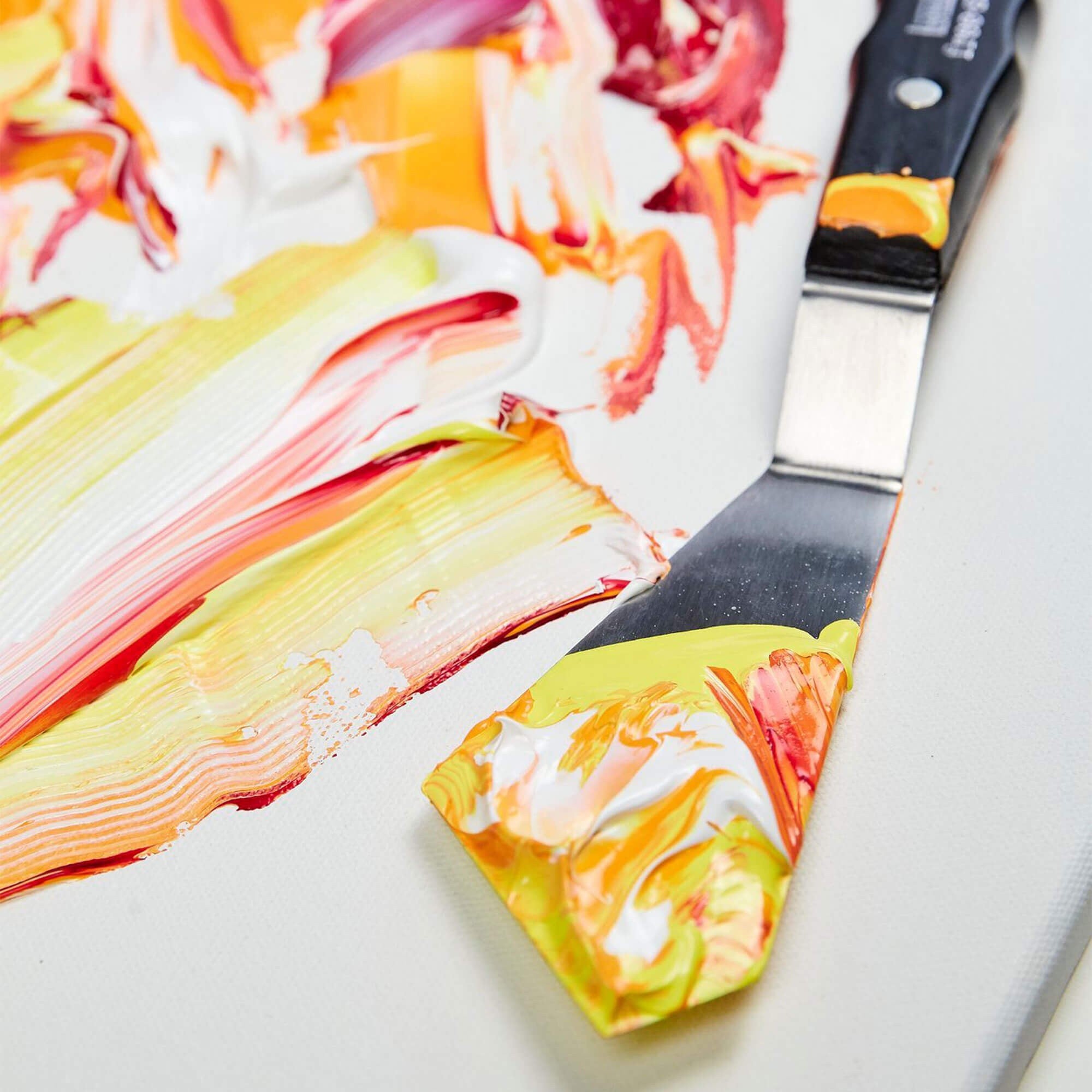When used with oil-based and acrylic paints, painting knives allow you to add relief to your artwork by creating thick, hard layers.
The idea of using this tool can seem daunting to some. That’s why we’d like to share three useful tips to get you started with ease.
Get your knives ready and start layering!
MATERIALS :

INSTRUCTIONS:
Technique 1: Use the painting knife to paint
The painting knife is a fantastic tool full of creative potential. Follow these 3 simple steps to learn how to use the painting knife to create textured and expressive images.
Step 1:
Dab the flat side of the knife in the paint. Apply it to the canvas by laying the flat edge firmly against the surface and dragging your knife downwards. Press your fingers against the knife blade to ensure firm contact with the painting surface. This is a great technique for applying paint in thick layers, blending areas or adding wispy traces of colour depending on how much paint you pick up with your knife.
Step 2:
When used on its edge, a painting knife is a great way to create sharp, straight lines. Coat the edge of your knife with paint and apply it to the canvas either on its side or by sliding it upwards in a smooth motion. This technique is useful for painting trees, grass and other fine details. The blade of the knife can also be used to scrape through layers of paint to create effects of depth.
Step 3:
Pick up a little paint with the curved tip of the painting knife. Apply the paint to your canvas in a curved motion with only the tip touching at a 30- to 45-degree angle. This gesture is perfect for rendering billowy cloud shapes or foliage. These are just three of the many possible ways you can paint with a diamond-shaped painting knife. Don’t be afraid to experiment with knives of varying flexibility and employ a variety of movements or angles to see which application technique works best for you. Most importantly, don’t forget to have fun!

Technique 2: Use the painting knife to mix the paint
Painting knives and spatulas are ideal tools for mixing paint on palettes. They are made of flexible metal or plastic and are available in a range of different shapes.
When mixing paint, choose a long enough knife with no elbow (the angled portion of the metal tip) to avoid having the mixed paint collect too close to the handle. Mix the paint on a smooth surface, such as a plastic palette or a sheet of wax paper.
Did you know that using a painting knife to mix paint is better than using a brush? The paint will become embedded in the bristles, damaging the brush and wasting paint.
Step 1:
Use the painting knife to add a small amount of each paint colour to the palette.
Step 2:
Combine the colours by spreading, scraping, and crushing the paint to create a small, evenly mixed glob.

Technique 3: Create texture with a painting knife
Painting knives can also be used to create unusual textures with a thick coat of paint and to spread paint over a surface. Practice these two techniques to create unique textures.
Option 1
Step 1:
Spread a smooth and fairly thick coat of medium over the painting surface.
Step 2:
Drag the blade of the knife along the surface.
Option 2
Step 1:
Use the knife to put some paint on the palette.
Step 2:
Apply the paint to the surface by pressing on the knife to spread the paint and create relief.








